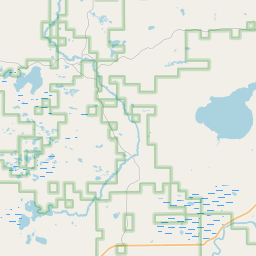Taming the Tahquamenon River
Historical marker location:
41382 West M 123, Paradise, Michigan
( Marker can be reached from State Highway 123, on the left when traveling south.)







© OpenStreetMap contributors
Loading...
Searching for other points of interest within 3 miles of this location.The Kellogg's company, famous for its breakfast cereals, was founded in Battle Creek, Michigan, in 1906. The company's first product was Corn Flakes, which was invented by John Harvey Kellogg and his brother Will Keith Kellogg. The company went on to produce many other popular cereals, including Rice Krispies, Frosted Flakes, and Special K.
About Luce County
Luce County Timeline
Luce County, located in the Upper Peninsula of Michigan, has a rich and diverse history. The area was originally inhabited by the Ojibwe and Potawatomi Native American tribes. In the 1600s, French explorers, traders, and missionaries began to arrive, establishing fur trade relationships with the Native Americans.
The county's history really took off in the mid-19th century with the arrival of European settlers. Lumbering became the main industry, and numerous sawmills were established across the county. The fishing industry also played a significant role, with commercial fishing becoming a major source of employment and trade.
In 1887, Luce County was officially established and named after the former Michigan Governor, Cyrus G. Luce. The county seat was established in Newberry, a town that quickly developed as the central hub. The arrival of the railroad in the late 1800s further contributed to the growth and prosperity of the county.
Throughout the 20th century, Luce County faced economic challenges as the lumber industry declined. However, tourism emerged as a new economic driver with the county's beautiful natural resources, including the Tahquamenon Falls and countless lakes, attracting visitors from all over. Today, Luce County continues to thrive as a popular tourist destination, offering outdoor activities such as fishing, hunting, hiking, and snowmobiling.
The county's history really took off in the mid-19th century with the arrival of European settlers. Lumbering became the main industry, and numerous sawmills were established across the county. The fishing industry also played a significant role, with commercial fishing becoming a major source of employment and trade.
In 1887, Luce County was officially established and named after the former Michigan Governor, Cyrus G. Luce. The county seat was established in Newberry, a town that quickly developed as the central hub. The arrival of the railroad in the late 1800s further contributed to the growth and prosperity of the county.
Throughout the 20th century, Luce County faced economic challenges as the lumber industry declined. However, tourism emerged as a new economic driver with the county's beautiful natural resources, including the Tahquamenon Falls and countless lakes, attracting visitors from all over. Today, Luce County continues to thrive as a popular tourist destination, offering outdoor activities such as fishing, hunting, hiking, and snowmobiling.
Luce County Timeline
This timeline provides a concise overview of the key events in the history of Luce County, Michigan.
- 1867 - Luce County is established on October 13, 1867, named after Michigan Governor Cyrus G. Luce.
- 1893 - Newberry, the county seat, is incorporated as a village on June 1, 1893.
- 1915 - The State of Michigan establishes the Luce County Park on Lake Superior.
- 1924 - Great Lakes Shipwreck Museum is established in Whitefish Point.
- 1934 - Tahquamenon Falls State Park is established.
- 1959 - Luce County Historical Museum is opened in the former county jail.
- 1969 - Whitefish Point Bird Observatory is founded.
- 2006 - The county experiences a severe windstorm, causing significant damage to homes and forests.